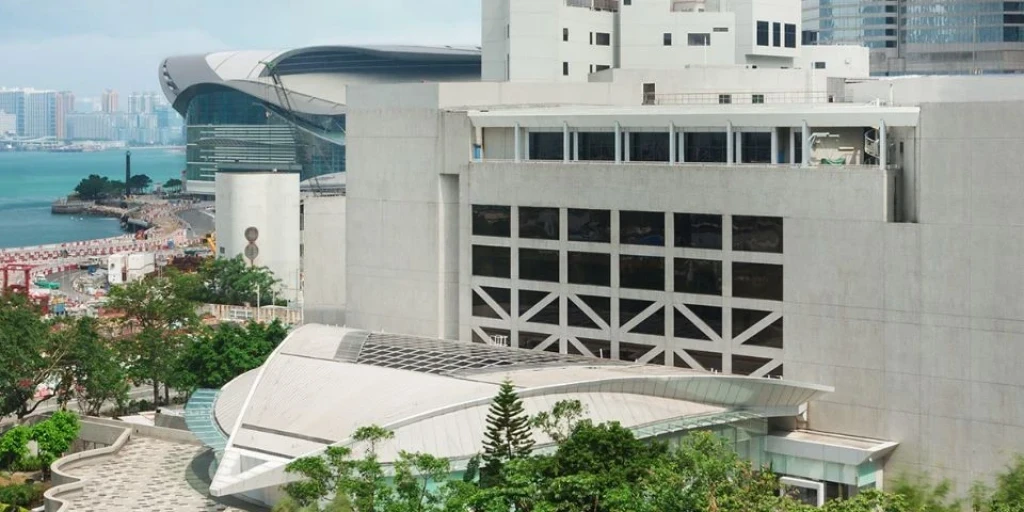(List in order of Appearance)
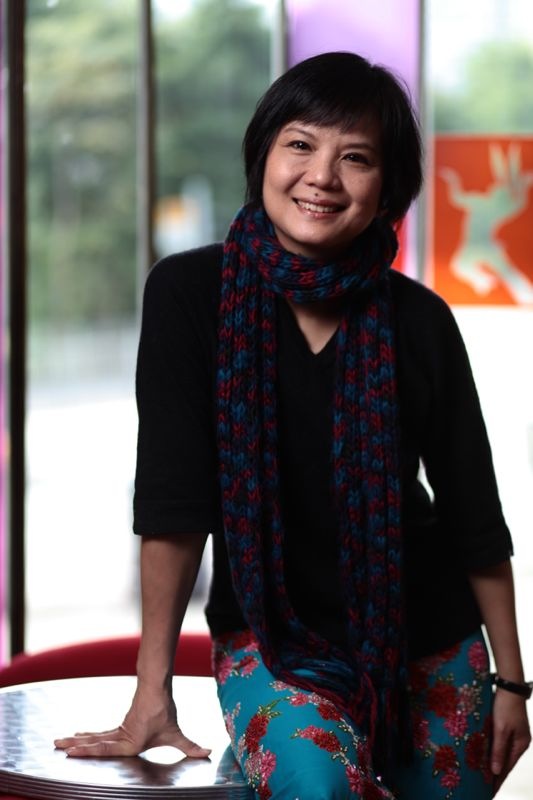
Bolero
Internationally renowned solo artist, choreographer and Academy Fellow, Mui Cheuk Yin’s take on Ravel’s Bolero uses over 30 dancers from the Hong Kong Academy for Performing Arts in a compelling work that combines traditional Chinese elements, such as fan, with modern choreographic forms.
Mui Cheuk Yin
Mui received training in Chinese classical and ethnic dance in Hong Kong. She danced with the Hong Kong Dance Company from 1981 to 1990 as principle dancer. In 1985, she won the Hong Kong Young Choreographer Competition and received a scholarship to study modern dance in New York. Upon returning to Hong Kong, she created the works Awakenings in a Dream, Cursive Script, and the Diary Series.
Mui became an independent choreographer, dancer, and teacher in the 1990s. Under the auspices of Asian Cultural Council, she took part in the International Choreographer's Programme at the American Dance Festival and performed at the East-West Center, University of Hawaii. Mui was often commissioned by City Contemporary Dance Company, the Hong Kong Dance Company, and the Hong Kong Academy for Performing Arts to create new works. Her major works include Fragrant Garden, Water Music, E-motion, As Quick as Silver, Stories about Certain Women, Eulogy, la grace, Between Bow and String, Of Grandeur and Desolation, Kinetic Body Operatics, Pink Lily, October Red, Duet 3X, The Enigma of Desire – Dali vs Gala, Lot‧us, Shui in Feng‧Shui, Desperately Seeking Miss Blossom, Season N in Seasonal Syndromes, Love Accidentally, and The Tale of Miles in Triptych.
Mui is an internationally renowned solo artist. She has been invited to many international arts festivals including Hong Kong Arts Festival (1994, 2001), Belgium International Arts Festival (1994), Lisbon Culturgest (1995), Re:Orient Dance Festival in London (1995), Hong Kong Festival at the Berlin Tacheles (1996), la Biennale du danse de Val-de-Marne (1997), Ein Fest in Wuppertal (1998), Venice Biennial Dance Festival (1999), Dancing-World Festival in Copenhagen (2000), the Lyon Biennale de la Danse (2000), Beijing Modern Dance Festival 2001, Dance Biennale Tokyo (2002) and the Images of Asia Festival in Copenhagen (2003). In 2000, Mui was invited by Pina Bausch and Folkwang Tanzstudio to choreograph Whispering Colour and to perform as a guest dancer in The Rite of Spring with Tanztheatre Wuppertal.
Mui was named the “Dance Ambassador” (2000) and received the Hong Kong Dance Distinguished Achievement Award (2012) as well as Hong Kong Dance Awards for choreography in 2013, 2009, and 2001. Other accolades include Wai Yin Association, “Outstanding Woman” (2001), Jessica Magazine’s “Most Successful Women” (2005), and the Chief Executive’s Commendation for Community Service (2007).
Hu Family Mansion
From the classic Water Margin, this excerpt is divided into three episodes: “Repulsing the Enemy”, “Capturing the Tiger” and “Being captured”. The story tells about the Zhu Family and the Hu family alliance against the bandit heroes of Liang Shan Bo. Zhu Biao’s fiancée, Hu San-Niang the ‘10 Foot Green Ribbon’, a woman warrior of great martial skills, battles the Liang Shan generals and captures Wang Ying the ‘Short-legged Tiger’ alive. Song Jiang, commander of the Liang Shan troops, changes his tactics and orderes his generals to take turns to fight Hu San-Niang, who is eventually captured by Lin Chong the ‘Panther Head’.
The Young Academy Cantonese Opera Troupe
Established in 2011, the HKAPA Young Academy Cantonese Opera Troupe aims to nurture professional young Cantonese Opera actors and accompanists to help preserve and revitalize this traditional art form.
Troupe members participate in public performances and other activities, and receive comprehensive training in foundation work, Cantonese operatic singing, body movement, and repertoire studies. The Troupe is committed to the preservation and revival of the traditional Cantonese Opera and capitalizing on the characteristics of the culture of Hong Kong, the Troupe advocates the use of Chinese and Western cultural elements to enrich artistic diversity and its approaches to Cantonese Opera performances. With interdisciplinary cooperation and application of Western theater technical arts elements such as stage, lighting, and audio designs and production management, the Troupe aims to optimize the horizon of this traditional art form on the stage and to encourage creativity in Cantonese Opera performance.
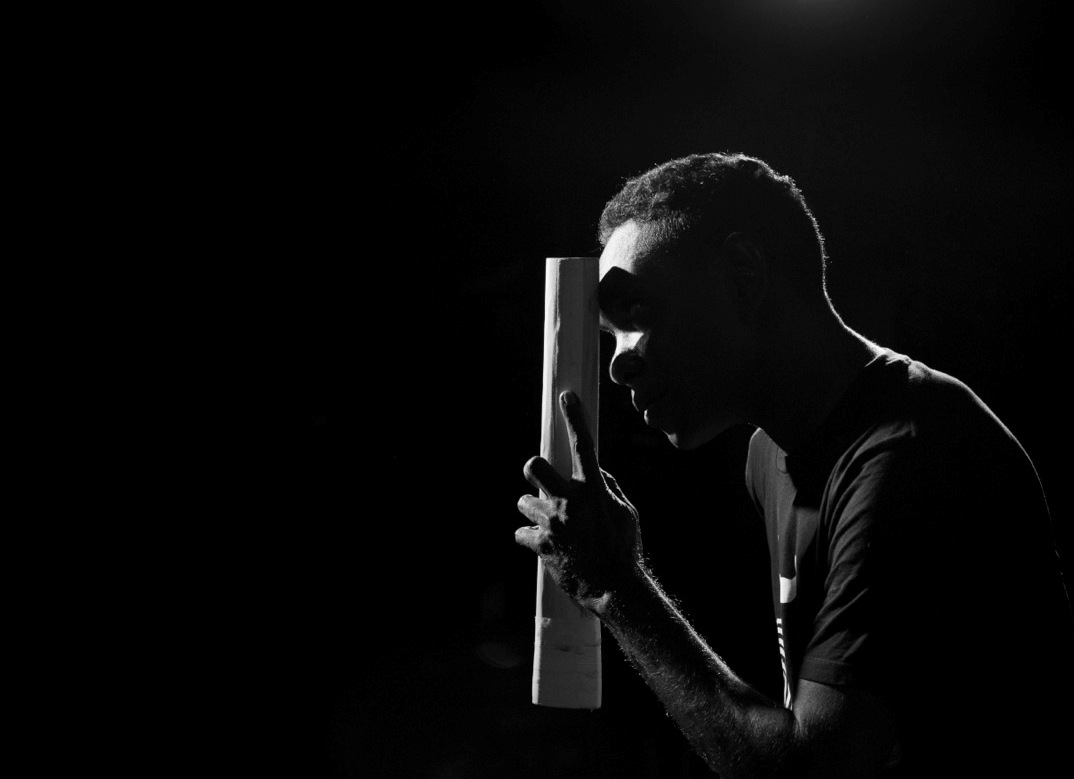
Crossing Roper Bar
Crossing Roper Bar is a visionary exploration of the musical traditions of Australia’s first people by the Australian Art Orchestra (AAO) in collaboration with the Young Wagilak Group. The Wagilak speaking songmen of South East Arnhem Land are custodians of one of the oldest continuously practised cultures on Earth. Their songs are performed regularly in Ngukurr, Numbulwar, Groote Eylandt and surrounding areas where the Wagilak are admired for their strong culture.
The AAO began collaborating with the Young Wagilak Group in 2005. Based on an equal exchange of knowledge that began as a dialogue centred on music, Crossing Roper Bar developed into a process of collaborative composition that retains the beauty and dynamism of both traditions. The Young Wagilak Group have worked closely with the AAO to create a contemporary interpretation of ‘Wild Blackfella’, a song cycle which traces the journey of the ancestor through his country as he calls up and names things.
An electrifying marriage of the very old with the very new, Crossing Roper Bar is a celebration of country, of ceremony, and of the power of music to build enduring bridges across cultures, time and space.
Australian Art Orchestra
Founded by Paul Grabowsky in 1994, the Australian Art Orchestra (AAO) has built an unparalleled reputation for the breadth and quality of its output. Initially conceived as a contemporary jazz orchestra the group was soon recognised as a serious commissioner and interpreter of new notated works. It also developed a reputation for cross-cultural collaborations that were more ambitious than anything seen in Australian music previously and it delved into hybrid forms well before the terminology for such approaches became commonplace.
Under Artistic Director Peter Knight, the AAO’s work constantly seeks to stretch genres and break down the barriers separating disciplines, forms and cultures. It explores the interstices between the avant-garde and the traditional, between art and popular music, between electronic and acoustic approaches, and creates works that traverse the continuum between improvised and notated forms.
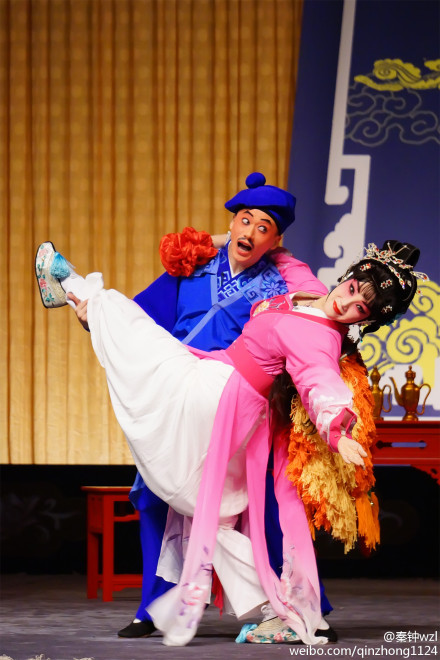
Miss Julie
Miss Julie, one of the most renowned works of Swedish playwright August Strindberg, is re-interpreted jointly by Professor Sun Huizhu, Shanghai Theatre Academy (STA) and Professor Fei Chunfang, East China Normal University in a very traditional Chinese art paradigm – Peking Opera. The title character, a young lady of prestige and fortune, enters into an affair with her servant Xiangqiang but soon finds out more about his true face. And what is worse, their relationship comes to the notice of Gui Sidi, Xiangqiang’s fiancée. What should Miss Julie do in such a dilemma?
Shanghai Theatre Academy Peking Opera Miss Julie Group
This transplanted version in the form of Peking Opera is directed by Guo Yu, a National Class 1 Director and Vice-president of Shanghai Theatre Academy. The three main characters, namely Miss Julie, Xiangqiang and Gui Sidi, are played by Zheng Shuang (a teacher of STA’s Traditional Opera School and a National Class 1 Performer), Yan Qinggu (a National Class 1 Performer at Shanghai Jingju Company) and Zheng Jiao (a student of STA’s Traditional Opera School) respectively. They make use of ‘one table and two chairs’, basic but traditional props of Peking Opera to create a sense of artistic beauty, and conventional performing paradigms to demonstrate the psychological struggle of the characters in a natural way with progressive manifestation in emotions. Music is composed by Qi Huan, a teacher of STA’s Traditional Opera School and a recipient of the “Excellent Young Teacher Award”. Her beautiful works give additional splendor to the breath-taking performances of the star performers.
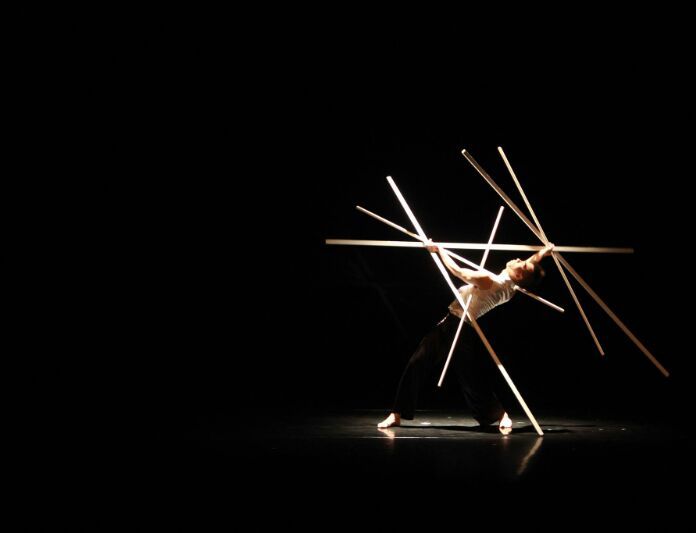
Line II
The latest creation in the “Classifiable Movement Series”, Line II is a visionary exploration and investigation of the 'geometric human body' in relation to its 'linear movement'. Gunshu, a common performing format in traditional Peking Opera, has been incorporated into this contemporary dance production to illustrate the nature of the linear distance between man and object.
Classifiable Movement Series
Chen Kai developed the "Classifiable Movement Series" to put his Classifiable Movement theory to practice and to visualise his concept of letting the movement speak for itself. The logic of the function and meaning of movement thus begin to take shape on stage, and dance is given new layers of meaning. Chen created his choreographic method of Classifiable Movement, which has since evolved into five characteristic movements, namely linear, rolling, turning, twist, and flex.
He has successfully choreographed and presented seven works in the series - Line, Line and Aureola, Sweep, Twist, Flex, Circle, Circle II ,with the present Line II making up the eighth. He took Line production to the Korea Choreography Festival in 2010. It was followed by Line and Aureola in 2012, for which he colloborated with the Hong Kong visual artist, Oscar Ho. It was staged at the Liu Haisu Art Museum of Shanghai. To further elaborate his Classifiable Movement methodology, Chen will continue to explore, learn, and assimilate the knowledge and findings offered by modern choreographers as well as his own experiences in life to achieve new insights into modern dance.
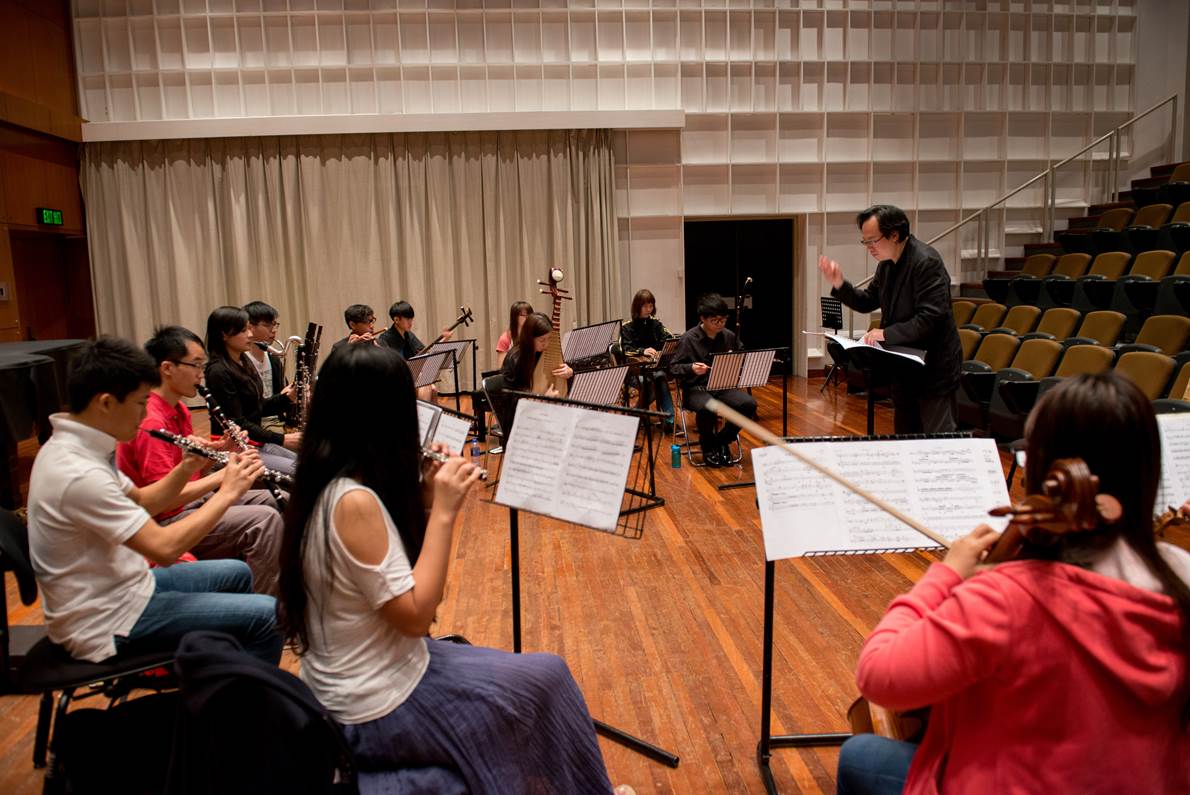
Creative Compositions, Creativity within and outside the Boundaries of Traditional Chinese Music
The performance today demonstrates compositional perspectives from selective solo or ensemble pieces by three composers, two from Hong Kong in different generations, Slash Leung and Clarence Mak, and the world renowned composer, Professor Tang Jianping from the Central Conservatory of Music in Beijing. The pieces were written for Chinese and/or Western musical instruments, examining compositional approaches to explore creative process with inspiration on traditional Chinese culture. Some represent the musical heritage that the composers reacted with suspicion and curiosity, introducing creative innovations while preserving the spirit of traditional Chinese music. Some provide us a new and proactive way of thinking about how to make our traditional Chinese music reborn in contemporary music with creative and artistic thoughts.
1. Xue Yu Ming for dizi solo and string quartet by Leung Chi Pong (Graduate)
The inspiration was from a poem by Bian Zhilin, a 20th century Chinese poet "It has been raining every day since you left"
"Since you came, it has been raining every day". I'm happy to answer for the rain both here and there. No news from a third place-should I post an umbrella? My care extends with the grass beyond the green horizon. Are birds safe in their nests and men on strange pillows? Let me stand a deep glass in the courtyard to see tomorrow. How many inches of rain have fallen tonight in the world
The three Chinese words in the title are not only to represent three different characters, but also the form of the music. “Xue” means snow, cold and lonely. “Yu” means rain, sad and dark. “Ming” means the sound, animal screaming.
In order to create those moods and effects in music, the composer made uses of the combination of Chinese and Western music instrumental color to expand the roughness and flexibility of Dizi with the string quartet.
2. Approach of Day for violin and viola by Clarence Mak
The 5 notes of the open strings in violin and viola form the pentatonic scale and the natural harmonics on each string are widely used in the music, which is to describe the birds flying freely in morning sky of changing color. The high register of the harmonics is gradually integrated into a melodic line with the Guangdong “Nanyin” singing style, and then slowly lands to the lower pitches of the open strings followed by a section full of rhythmic sense. This piece is to achieve a sonority in which Chinese tonality is blended with natural harmonic tones in the enhancement of contrasting tone colors and articulations.
3. On the Mountains Over the Clouds for guzheng solo by Clarence Mak
This solo piece for gu-zheng is to express the artistic conception and feeling for the beauty of nature in which a balance between motion and stillness is achieved, as well as an attitude towards life – inspired by poem “Sitting Along at Mount Jingting” by Li Bai in Tang Dynasty.
4.Cui Zhuo Divertimento for 14 Chinese and Western instruments by Professor Tang Jianping
This composition originated from a 2011 string quartet composition of mine with the same title, revised and arranged for this mixed ensemble. I hope the work exhibits more relaxed joyfulness and carefree humor than the reason and seriousness often found in contemporary music. Wishing it would add a joyous respite to arduous creation.
“Cui Zhuo” is “Zhong Cui” in ancient Chinese, sounds of young chicks breaking egg shells to emerge from the egg; “zhuo”, the hen pecks at the shell to get chicks to come out. In order for the chick to hatch, the hen and the chick need to cooperate inside and out to break the egg shell, people often use this to symbolize chance meet up or a good fit. Buddhists often use the expression “simultaneous cui zhuo” to describe the match made in heaven when the right master finds the right discipline in the course of Zen meditation/Buddhism cultivation. This allegory also refers to the good interaction between teacher and pupil during teaching.
The main musical element is derived from the overlapping of the same interval on the four string instruments, and variation is used to realize musical expression with pictorial sensation.
Tang Jianping, Clarence Mak, Leung Chi Pong
Tang Jianping, Professor of Composition at the Central Conservatory, is one of the most active composers in China today. His musical compositions are varied and comprise all kinds of musical genres. Many of these works have turned into classics and are performed unfailingly in concerts all the time.
His major representative works have included the opera Song of Youth, dance drama Shaolin in the Wind, musicals Colourful Clouds Floating Across the Hill and Love Warms Tian Shan. Large scale Buddhist Chant Symphony Shen Zhou Harmonious Joy, large scale Mongolian historical Symphonic Poem Genghis Khan, large scale nationalistic Symphonic Poem Drama Cowherd and Weaving Maid and Yang Ou Sha. Oratorio White Horse Entering Sea of Reed Flowers and Road. Pipa Concerto Spring and Autumn, Symphonic Concerto Olympic Fire 2008, Percussion Concerto Cang Cai, Dizi concerto Fei Ge, Guqin Concerto Cloud Water, nationalistic orchestral music Hou Tu, Nonet Xuan Huang, String Quartet Cui Zhuo, etc, in addition to Guqin music written for John Woo’s movie Red Cliff, and music for CCTV’s television documentary Forbidden Palace.
He has received all sorts of awards from many competitions such as the highest level of contests in national symphonic music contests, while at the same time he is also a recipient of First Prize Award of China’s National Excellence in Teaching, as well as Education Ministry’s Bao Gang Excellent Teacher Special Prize, etc.
Clarence Mak was born in Hong Kong. He has been involved in musical performance as a composer and guitarist for more than thirty years, giving music lectures and demonstrations in various institutes.
Clarence Mak pursued music training in composition and electronic music in Hong Kong and USA , studied guitar performance in Musica En Composetela in Spain, and musical acoustics and programming at Stanford University’s CCRMA (Center for Computer Research in Music and Acoustics).
He composes music for local and overseas ensemble groups, orchestras, dramas, dances, electronic and multi-media. His compositions have been featured in various local and international concerts and festivals.
Mak actively takes part in professional services, promoting music making and related educational activities, being the advisor, committee member, delegate and member of Jury, project producer, and keynote speaker for international festivals. He was the secretary, treasurer, Vice Chairman, and Council Director of the Hong Kong Composers' Guild from 1987 to 2014 respectively and a member in organizing committees for major musical events.
Mak has joined the music faculty of the Hong Kong Academy for Performing Arts for many years and is currently the Head of Composition and Electronic Music.
Leung Chi Pong studied in Hong Kong Baptist University for his Bachelor degree in Art (Music) and Master of Music (composition) in the Hong Kong Academy for Performing Arts. His teacher includes Dr. Lo Hau Man, Dr. Christopher Keyes and Dr. Christopher Coleman. Chi Pong’s works were performed by Bang on a Can All-Stars (USA), Psapphas (UK), Hong Kong Kamerata, Hong Kong New Music Ensemble, Hong Kong Academy Symphony Orchestra, Hong Kong Academy Chinese Orchestra, Musicogenic Symphony Orchestra, Kwai Tsing Philharmonic Orchestra and Miss Emily Li (Handbells). Chi Pong’s works were selected in New Generation Composition Competition Concerts in 2010 - 2012 and performed by several ensembles on Radio Television Hong Kong (RTHK). In 2012, he received the Society of APA Scholarship and Academy EXCEL Scholarship respectively. He was also the winner of HKAPA Concerto Trial in 2011 - 2013 successively. In 2013, he achieved a 3rd prize in the 10th Italy Percussion Composition Competition. His work was also being selected in 32nd ACL Festival & Conference 2014.
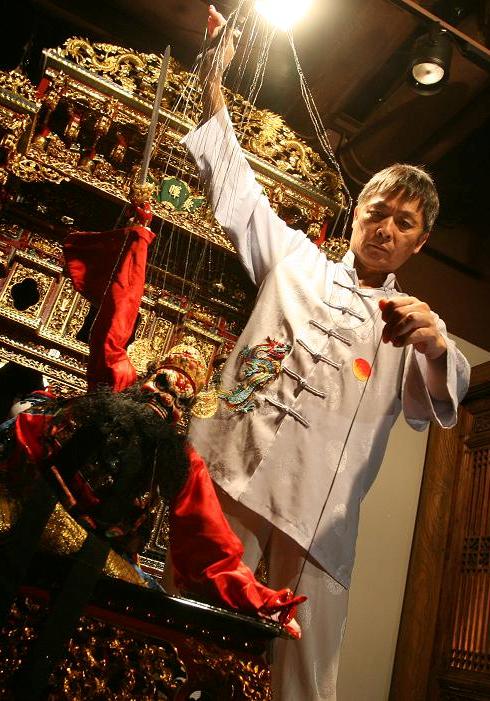
Drunken Zhong Kui and Happy Childhood Memories
Drunken Zhong Kui - According to Chinese folklore, Zhong Kui is the god renowned for his ability to vanquish all ghosts and devils. Born in the Tang Dynasty, he was originally a rural scholar of profound knowledge. Like many other intellectuals of his time, he took part in the imperial examination and achieved top honors in it. Unfortunately, the emperor decided to disqualify Zhong just because of his hideous appearance. Zhong Kui felt so angry and humiliated that he committed suicide! Sympathetic towards his misfortune, the King of Hell named Zhong the ‘King of Ghosts’, enabling him to order and command all ghosts. However, so many evils were making trouble, Zhong, for relief, decided to get drunk …
Happy Childhood Memories - The show is adapted from the circus act in the famous children’s novel The Adventures of Pinocchio. Familiar cartoon characters are reinterpreted in a traditional art form – puppet show. This amusing stage performance reminds us of our happy childhood stories in
those good old days…
Hong Kong Puppet and Shadow Art Center
Established in 2001 for promotion and development of traditional puppetry, Hong Kong Puppet and Shadow Art Center’s distinctive artistic style is built on traditional foundation and innovative execution. The Center specializes in four traditional types of puppets and shadow art with emphasis on manipulation of puppets and shadows, as well as nuanced performance.
In 2003, the Center received a Special Award in the Golden Lion Competition in China. The Center’s artistic team often takes part in films, television productions, and commercials, while being actively involved in the promotion of traditional puppetry at universities, secondary and primary schools, and in the organization of puppetry and shadow art teams and interest groups. The Center’s artists frequently perform in entertainment venues, schools, shopping malls, and theme parks and are frequently invited to perform in different puppetry and shadow art festivals around the world.

Pathos
Each year the School of Dance invites world-class choreographers to create/set work for its May public performance season. These luminaries have included the great William Forsythe, Mainland stars Zhao Ming and Liu Qi, Rob Tannion, Cathy Marston, Ismael lvo (founder and director of the famous ImPulsTanz Vienna International Dance Festival), to name but a few. One of the highlights of each of these seasons has been what we call the ‘cross-stream’ work, where the cast is a mix of dancers selected from each of the School’s three streams - Ballet, Chinese Dance, and Contemporary Dance.
The challenge for both dancers and choreographers in these unique works is to meld the group into a unified, cohesive whole, and create something that transcends discipline-specific boundaries (even though these may in fact be played on). Importantly, the works showcase not only the talents of our young dance artists, but also many of the principles that lie at the very heart of the School’s philosophy - high performance standards, innovative new work, the cross-disciplinary, the collaborative, and the coming together of east and west.
In May this year, as part of the Academy’s 30th Anniversary, the School of Dance presented a programme which consisted (unusually) of three cross-stream works, among them the one being performed as part of the Crossing Borders: Blurring Boundaries presentation/keynote. Created by Tibetan-born, Beijing-based choreographer Sang Jijia (a 2002/2003 Rolex Arts Initiative Protégé; and a former dancer with William Forsythe’s Ballett Frankfurt), Pathos is a high-voltage contemporary work which challenges its dancers not only technically, but also in terms of focus, stamina and endurance. Helping drive it forward is the music - a score especially commissioned for the occasion by the School from local Hong Kong composer Dixon Dee (Li Chin Sung), and created in the studio as the dance work took shape.
A notable feature of the original Pathos was that the dancers played an integral part in the creative process, so that the work was ultimately something created in close artistic dialogue between choreographer and dancers - a sign, perhaps, of the trust and confidence the choreographer had in his dancers. However, later versions (including this performance) also presented us with a new challenge: since a number of those originally involved in the making of Pathos graduated in June, a new cast had to be brought together to reprise the work with the same strength and cohesion as the first. Under the guidance of original rehearsal directors Zhao Minhua (Ballet) and Li Yongjing (Contemporary Dance), there can be no doubt that they have succeeded admirably!
